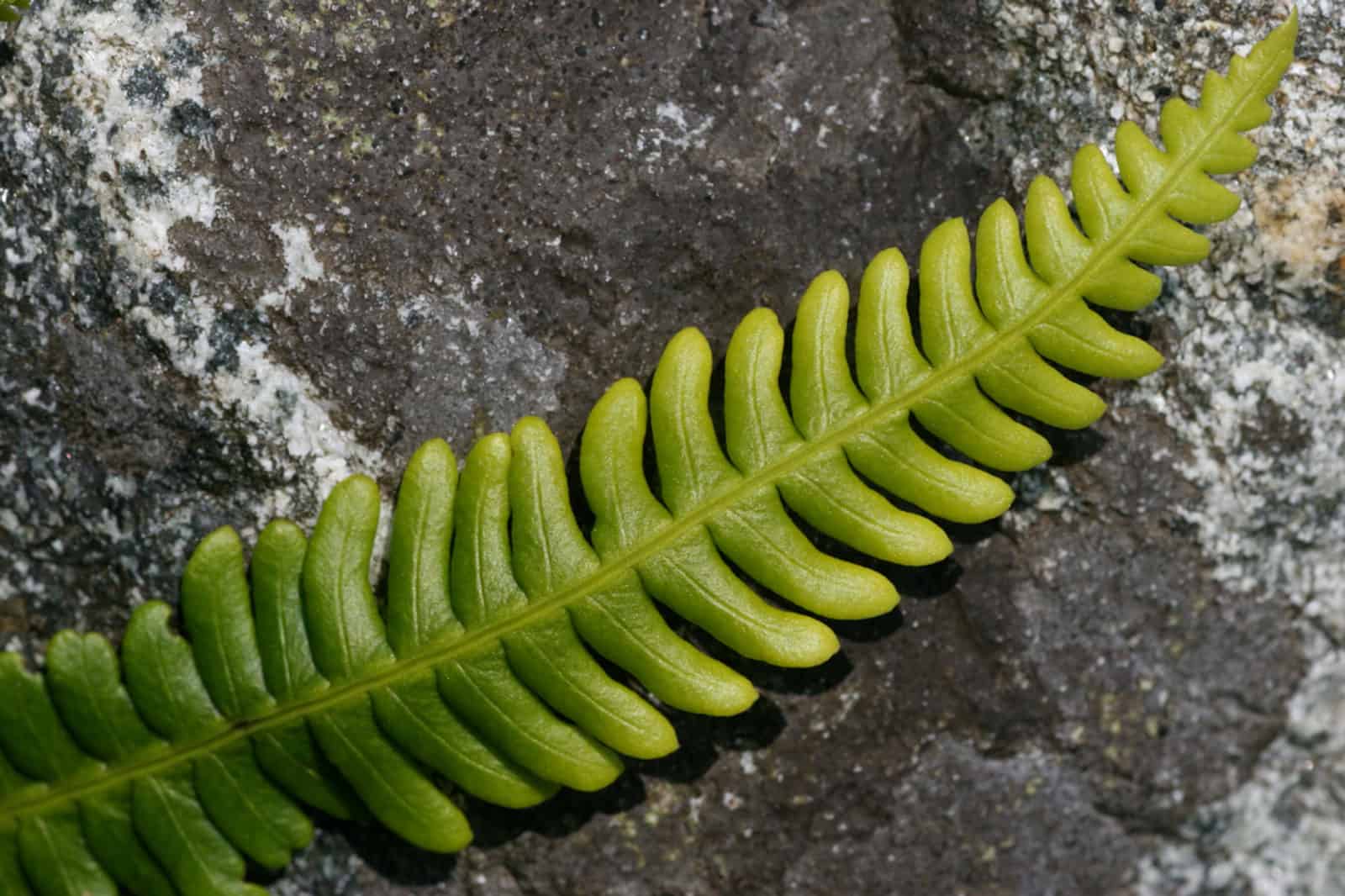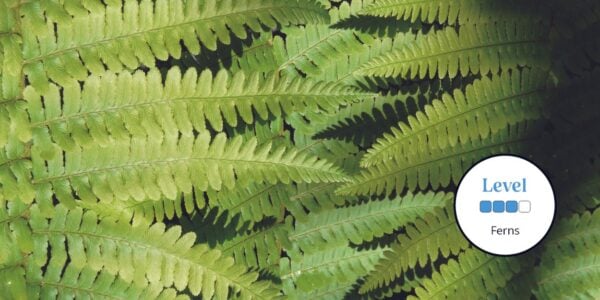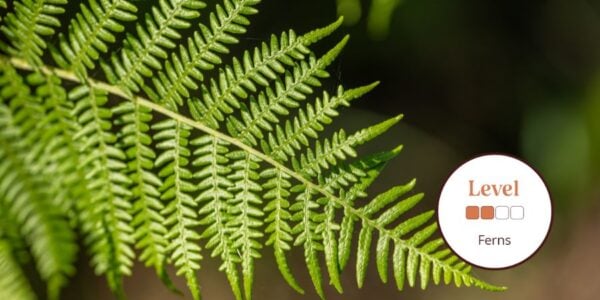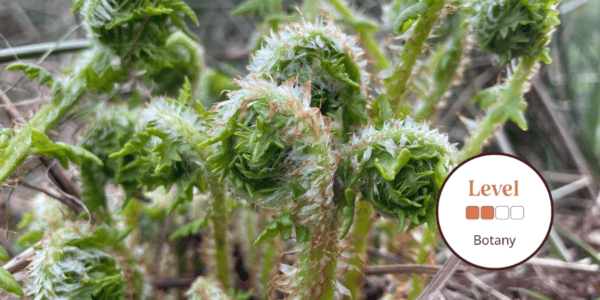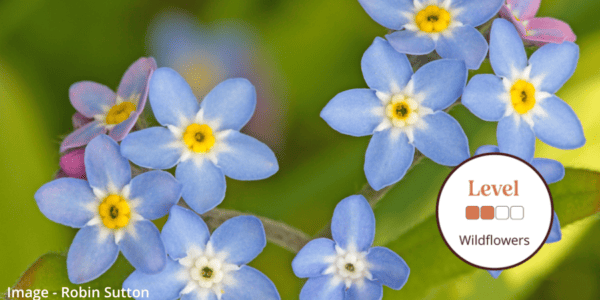This fern identification course includes botany, ecology and identification of ferns in their natural habitats in North Wales.
The three days of this course will be spent in the beautiful, rugged landscape of the Snowdonia National Park, looking at Pteridophytes: ferns and their allies, in their natural habitats. Sites you will visit will include upland and lowland, acidic and alkaline habitats, ensuring that you have the opportunity to observe a variety of species from a number of families. Your study will primarily involve the identification of species, but attention will also be given to learning about basic fern ecology and factors that affect their survival.
North Wales contains a diverse range of plant communities and a wide range of habitats as a result of its coastal and mountain sites, complex geology, and varied land use. This results in there being an extremely wide variety of ferns, clubmosses, and horsetails growing in the area! This course will provide you with a firm grounding in the botany and ecology of these fascinating plants. Identification will include dealing with some of the complex apogomous groups such as the Dryopteris affinis aggregates.
Daytime walks will be up to four miles long through stunning rural scenery in and around Snowdonia with spectacular views on clear days. The terrain will be diverse, including some rocky, steep sections, but will be taken at a pace to enable botanical observation. Rain will not prevent the course running, but field days may be curtailed if prevailing weather conditions are unpleasant. Evening identification sessions in the laboratory with fern field guides, specimens, and hand lenses will help to consolidate learning.
Tutor: David G Hill
David has had a long interest in all aspects of natural history. After training in Forestry and Soil Science he has worked in Wildlife Photography, IT and Further-Education, but became interested in Biological Recording in 2011. He went on to complete a Master’s Degree in Biological Recording in 2015, with a dissertation on Marsh Clubmoss and has developed a particular passion for ferns and lycophytes. He is currently Honorary General Secretary for the British Pteridological Society, a Cofnod Director and Fellow of the Linnean Society.
Example Timetable
Example Timetable
If you have booked accommodation with the Centre your bedroom will be ready from 3.00 pm onward on the day of arrival and we ask that you vacate by 9.30 am on the morning of departure.
Please arrive in time for the evening meal at 6.00 pm on Friday
The course starts after dinner with a classroom session 7.30 pm - 9.00 pm
The course ends at 4.00 pm on the final day.
Time will be made available for eating packed lunches during the day.
This timetable is subject to change but should give an outline of what to expect.
Friday
Welcome; outline of course; orientation; health & safety; equipment to be used.
Introduction to Ferns and Lycophytes.
Sporophyte morphology.
Saturday
Woodland & Coastal ferns.
Wall ferns.
Difficult groups.
Sunday
Upland ferns & specialists.
Fern horticulture.
Monday
Taking things further; assignment & synoptic test.
Field visits will include a range of different habitats around Cwm Idwal, Aberffraw, Port Noble, Llangaffo, Llanfaelog, Valley Wetlands, Coed Felin Rhyd and Bwlch yr Haiarn.
What's Included
What’s included?
- Classroom learning covering the theory of the subject
- Field excursions to apply new knowledge
- Expert tuition for which we are is renowned
- Clear objectives and progression
- All meals provided
You can rest assured that the absolute best content from an expert in environmental education will be provided. In choosing this course, you will be joining thousands of people who learn with us each year.
Before You Attend
There will be a member of staff with first aid training and access to a first aid kit on site. If you have special medical or access requirements, please let us know as soon as possible so we can make any necessary adjustments.
What to bring
- Merryweather, J., & Hill, M., The Fern Guide, Shrewsbury: FSC, 3rd edition (2007).
- You own ID books, hand lens & field notebook will be useful.
- Warm clothing is essential.
- Sun cream and sun hat (hopefully these will be essential!).
- Waterproof jacket and waterproof trousers (can be borrowed from the Centre).
- Outdoor footwear (walking boots and wellies can be borrowed from the Centre).
- Day rucksack, warm hat and gloves (can be borrowed from the Centre).
- A torch, water bottle, thermos flask and lunch box.
We will provide specialist equipment, but if you have your own you are welcome to bring it.
Recommended Reading
- Jermy, A.C. and Camus, J. (1991) The Illustrated Field Guide to Ferns and Allied Plants of the British Isles. NHM
- Merryweather, J. (2007) Guide to common ferns. FSC
- Merryweather, J. and Hill, M. (2007). The Fern Guide. 3rd ed. FSC
- Rich, T.C.G. and Jermy, A.C. (1998) The Plant Crib. BSBI (Free download)
- Stace, C.A. (1997) New Flora of the British Isles. 3rd ed. CUP
Sorry this course booking is closed

